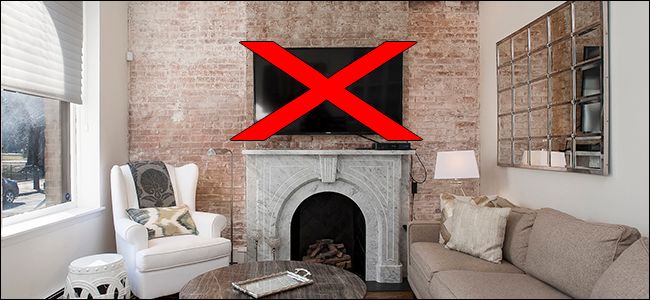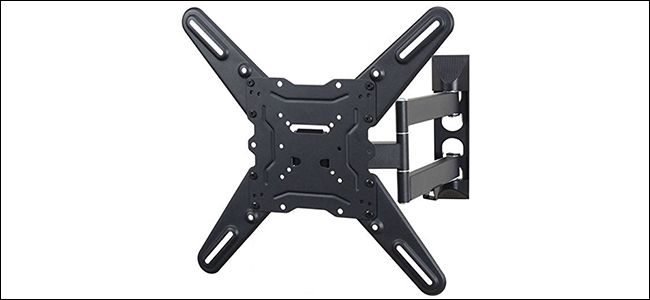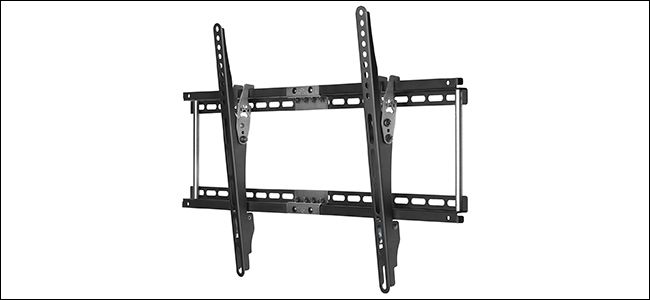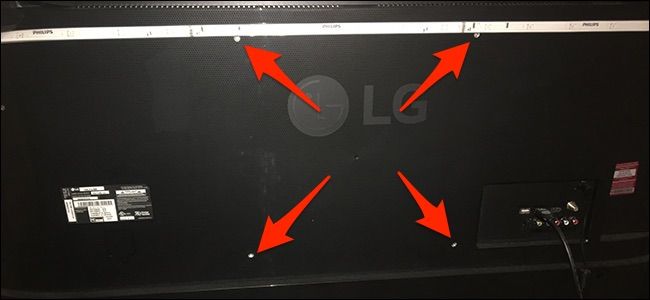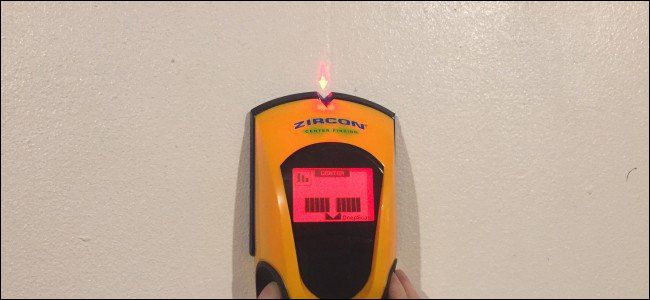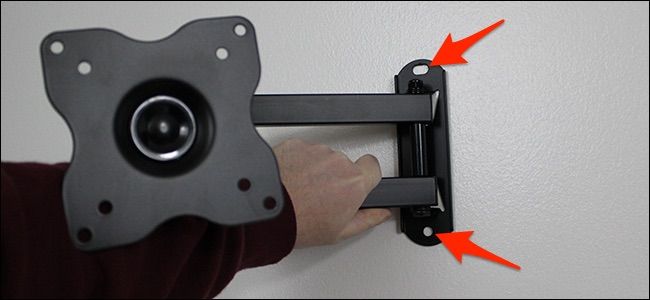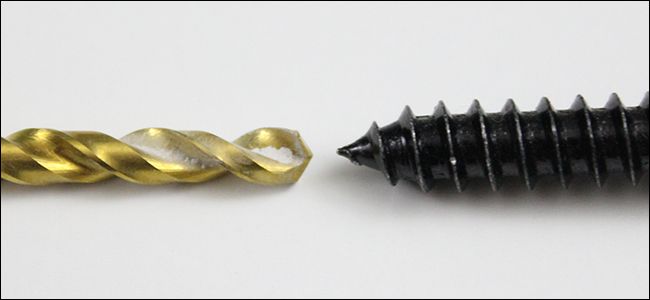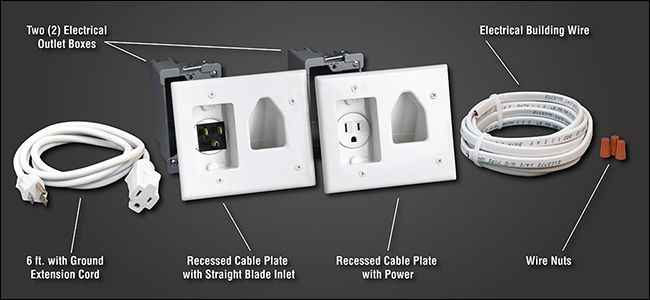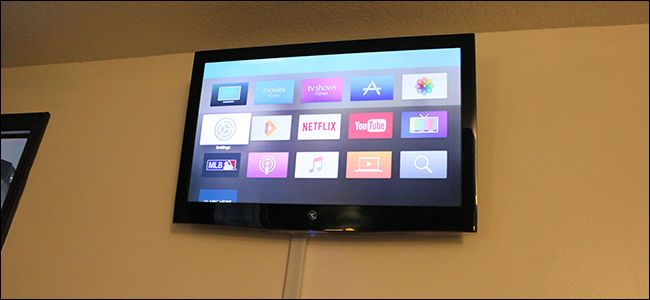Quick Links
Mounting your TV to the wall is not only a great way to save space, but it also looks nice and clean. However, there's a little more to it than just buying a wall mount and screwing in your TV. Here are a handful of things you should know when it comes to mounting your TV to the wall.
Decide Where to Mount Your TV
First off, you need to figure out exactly where you want your TV to go. This is something that is ultimately up to you, but there are a couple of rules of thumb to be aware of.
The most important rule is to mount your TV at eye level from where you'll be watching it, if at all possible. This usually means the bottom of the TV will be somewhere around 2-3 feet off the ground, give or take a few inches.
Many people mount their TV up high above a fireplace or bookshelf, but that's usually a bad idea since you crane your neck up to see your TV, which can be very uncomfortable when done for an extended period of time. The only exception is in the bedroom, where you might want to lie down and watch TV at the same time---having the TV mounted up higher toward the ceiling is great for this, as you would have to tilt your head forward as severely.
Get the Right Mount Type and Size
There are generally two types of wall mounts that you'll come across. The first one is an articulating mount, which is meant for smaller televisions and usually has one arm with a couple of articulating joints that allow you to pull the TV out from the wall and turn it in nearly any direction.
Again, these mounts are usually meant for smaller, lighter televisions since they can usually only mount to the wall at a single point, although you can sometimes find articulating mounts meant for larger televisions as well, which can mount to the wall at multiple points.
The second type of TV wall mount is also the most common, called a tilting mount. These allow you to mount your TV to the wall at multiple points---sometimes up to six---so they're great for larger, heavier televisions.
The only downside is that you can't swivel the TV side-to-side---you can only tilt it up or down, and even then you can only tilt it a few degrees. But if you're going to be mounting it at eye level right in front of the couch, you really don't need any major articulation features anyway.
Once you decide on the type of mount you want, you also need to make sure that it will fit your television's mounting holes. All modern televisions are VESA mount-compatible, which simply means that they comply with the Video Electronics Standards Association's mounting standard used by pretty much every TV mount on the market.
However, televisions have different mounting holes, so it's important to get the right size mount that will fit your specific TV. Luckily, thanks to the VESA standard, it's really easy to figure out what mount size you need.
If you look on the back of your television, there will be four screw holes that form a square. Simply measure the distance between two of those screw holes (not diagonally) in millimeters. So if the distance is 400 millimeters, you would need a VESA 400 mount (or sometimes called VESA 400x400). Luckily, most tilting mounts are compatible with pretty much any VESA mount size, but it's always a good idea to check before you buy one.
Mount It the Right Way
Now that you have the TV wall mount, you can get to work mounting---but you just can't pick a random spot and start screwing it in. Televisions and the mounts themselves are heavy, so you need to make sure that you mount your TV correctly so that it doesn't come crumbling down right after you install it.
You'll need to screw the TV mount into wall studs for maximum holding power---if you just mount it to the drywall, you're sure to cause a lot of damage, since drywall isn't actually that strong.
Get a stud finder and use it to locate the studs behind the drywall. Studs are placed every 16 inches on center, so you should be able to mount your TV on two studs if you're using a tilting mount, sometimes three studs if you have a larger television and mount.
From there, place the TV mount where you want it (have a second person there to help) and mark with a pencil where you need to screw it into the wall, making sure that there are studs at these locations.
Before you screw in the TV mount, though, you'll need to drill pilot holes, which will prevent the studs from splitting when you drive in the screws. Plus, if the mount uses thicker screws or bolts, it'll be pretty much impossible to drive them in without drilling pilot holes anyway. Remember that the drill bit for the pilot hole will need to be just slightly smaller than the width of the screw.
Once you have your pilot holes drilled, you can now position the TV mount on the wall and drive in the screws or bolts using a power drill or socket wrench (depending on the type of screws or bolts used). There will likely be instructions included with your TV mount, so be sure to take a close look at those if you're unsure of anything.
After you've placed the mount on the wall, it's just a matter of attaching the brackets to your TV using the four screw holes on the back of the television, and then hooking that up to the wall mount.
Hide the Cables
Once you have your TV mounted, you can either call it a day or take the time to hide all of those cords that are now hanging down your wall. You have a few options for doing so.
The best option is to install a specialty kit that more or less creates an extension cord behind the wall using code-compliant electrical wire, as well as a dedicated tube to feed other cables through. This will allow you to plug the TV in right where the mount is, and the rest of the cables get routed down near the baseboard where you can then plug the cables into their respective devices. (You could just drill two holes in the wall and run the cables through them, but that's against code.)
However, installing something like this requires cutting a hole in your wall and a bit of electrical know-how, so if you're not quite sure what to do, feel free to call an electrician to do it for you, or get a knowledgable friend who can help out.
If you'd rather not make giant holes in your wall either way, then the easiest method is to get some cord-hiding material that you simply screw to the wall and route all of the cables through that.
It won't make the cables completely hidden, but it will look a lot cleaner than just leaving the cables dangling.
In the end, mounting a TV to the wall isn't too difficult, and I highly recommend it if it's possible to do in your home, but there just a few things you have to keep in mind in order to mount your television the right way and have it look good.
Image from Paintzen/Flickr


